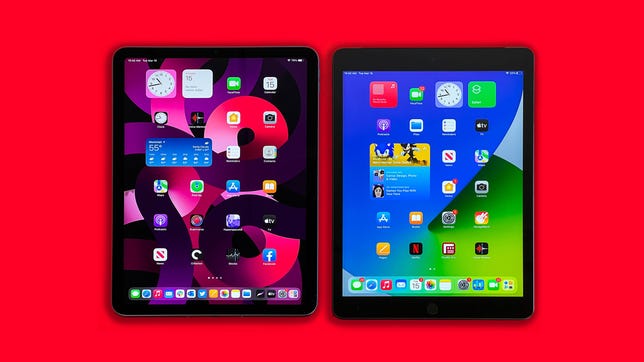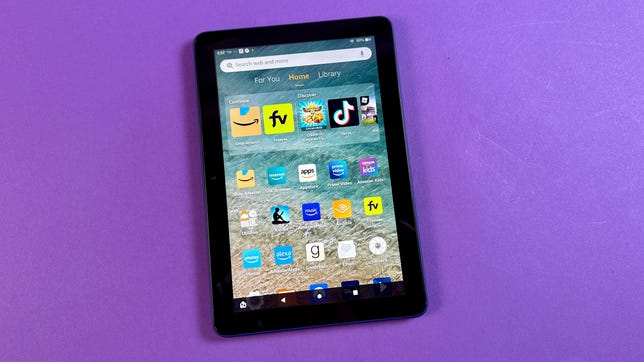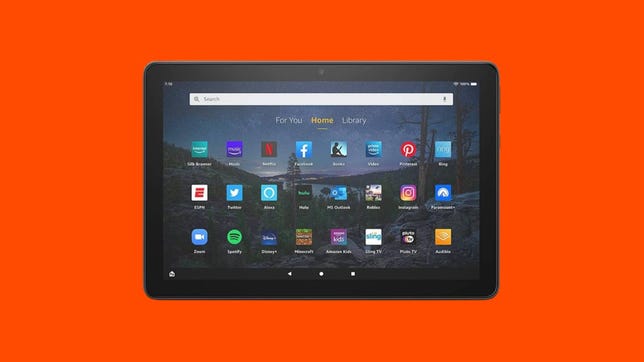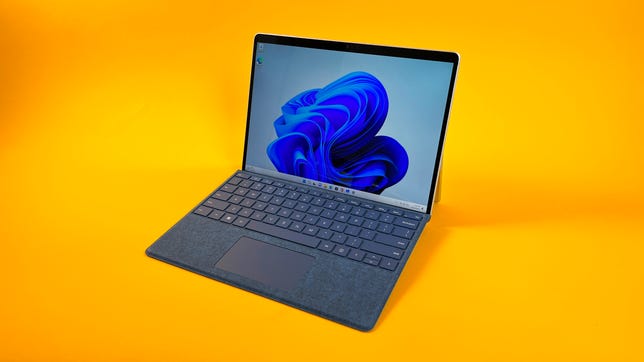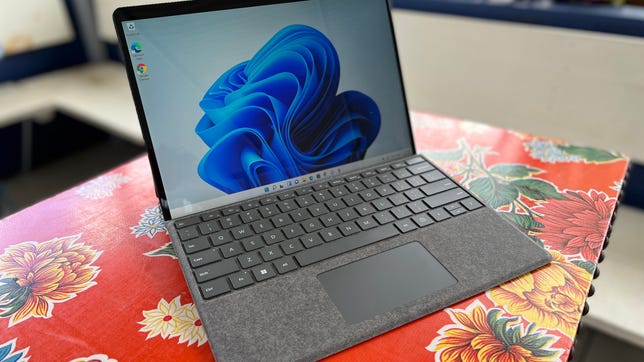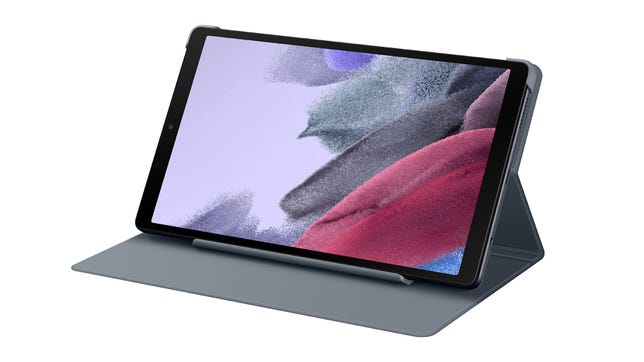Technologies
These Are the Best Tablet Deals Available Right Now
We’re keeping tabs on all the best tablet deals.

Tablets are a great choice for people who don’t want to carry around a laptop but still need a screen that’s larger than a traditional smartphone. There are so many tablets on the market, and some stand out more than others. Apple’s iPad typically dominates the tablet market, so it’s understandable that a lot of folks will be on the lookout for an iPad deal.
That being said, there are reasons why you might choose an Android tablet or a Windows tablet instead. Whether you’re all in on Apple gear or you want a tablet that offers a similar experience to your non-Apple phone, we’ve got tablet deals for you. And don’t forget about Amazon Fire tablets, which are great value for money, or Windows tablets, which are good for bridging the divide between work and home.
We keep track of tablet deals all year round and round them all up below so that you always get the best prices available.
Best tablet deals
Walmart
You can save $48 on Apple’s latest iPad Air right now. It costs $599 from the Apple Store and features Apple’s M1 chip, found in the company’s iPad Pros, along with 5G and a wider-angle, front-facing camera with the Center Stage autofocusing video feature. CNET’s iPad expert Scott Stein still recommends the less expensive 10.2-inch iPad for most people, but sees this iPad Air as a solid step up. Available in select colors, the $48 discount at Amazon is the biggest price break we see right now but less than half the $99 discount offered last month. Read our iPad Air 2022 review.
Apple
There are supersized smartphones that are getting close in size to the smallest iPad, but this is still a great product for a specific slice of the audience. It’s best if you want something nearly pocket-sized for casual video viewing, gaming or reading. It’s also a good match for new cloud gaming services when paired with a controller. The current discount is less than last month’s $99 price break, but the Mini is still one of the few iPads you can find for less than full price right now. Read the iPad Mini (2021) review.
David Carnoy/CNET
Amazon continues to make the best inexpensive tablets for media consumption. The Fire HD 8 is the middle of the lineup, hitting a sweet spot for price and performance. The 2022 model boasts a thinner and lighter design along with a faster processor and an hour more battery life (13 hours versus 12) than its predecessor. It’s definitely a good low-cost option for streaming video, reading ebooks and web browsing, but we still recommend waiting to pick it up when it’s discounted, which Amazon regularly does, including right now at $40 off. We also recommend spending an additional $20 for the Plus version, which adds more RAM (3GB instead of 2GB) and wireless charging.
Amazon
Amazon’s Fire HD 10 is the biggest and most powerful tablet that the company offers. It features a 10-inch screen that’s not only bigger than the 8-inch screen of the Fire HD 8 but also brighter. The Fire HD 10 comes packed with benefits for Prime subscribers, making it easy for members to stream and download movies, TV shows and games. The Fire tablets don’t use a pure version of Android. Instead, they use Amazon’s Android-based Fire operating system, pulling apps from the Amazon App Store. You can still get apps from Google Play, even though you’ll have to install the store yourself — meaning gaming enthusiasts have access to all of their favorite mobile games for an excellent gaming tablet experience. The Fire HD 10 starts at $150 but is currently selling for only $120.
Dan Ackerman/CNET
If you want the latest Microsoft tablet, the Surface Pro 9 is it. It offers 12th-gen Intel Core processors, 5G support and some new colors. To get this $200 discount, however, you’ll need to be OK with the standard black graphite color. And also be OK with connecting to the Internet via Wi-Fi; this model doesn’t feature 5G cellular. What it does offer is a modern 12th-gen Core i7 CPU, an ample 16GB of RAM and a relatively roomy 256GB SSD. The 13-inch display offers a crisp 2,880×1,920-pixel resolution. One last note: You’ll need to purchase the requisite keyboard cover separately, unless you have one from an older Surface Pro 8 or Pro X — those are compatible with the new Surface Pro 9.
Dan Ackerman/CNET
The Surface Pro 8 was supplanted by the Surface Pro 9 at the top of Microsoft’s tablet lineup last fall, but the new model offers only a modest upgrade — newer Intel CPUs, a slightly faster type of RAM, 5G support, and some new color options. When you can find a Surface Pro 8 at a sizable discount, it makes a compelling cost-saving alternative to the Surface Pro 9. This Surface Pro 8 features a high-resolution 13-inch display powered by an 11th-gen Core i5 CPU, 8GB of RAM and a 256GB SSD. The list price for this model is $1,200, but the price has dropped by more than $400 at Amazon. You can put a fraction of those savings toward a snap-on keyboard cover, which is not included in the price of this sale model.
Samsung
The Samsung Galaxy Tab S7 FE is a midlevel Android tablet that occupies the space between a basic iPad and an iPad Pro. The baseline Galaxy Tab S7 FE (short for Fan Edition) with 64GB of storage is discounted by $81 right now at Amazon. The tablet features a roomy 12.4-inch display and includes Samsung’s S Pen stylus for drawing and jotting down notes.
Samsung
At its discounted price, this relatively budget Android tablet is a good pick as an affordable entertainment tablet for kids. It features a small (kid-friendly) 8.7-inch display with a 1,340×800-pixel resolution protected by a sturdy, metal (kid-resistant) enclosure. Note that the keyboard case is not included.
Technologies
Today’s NYT Mini Crossword Answers for Monday, Oct. 27
Here are the answers for The New York Times Mini Crossword for Oct. 27.
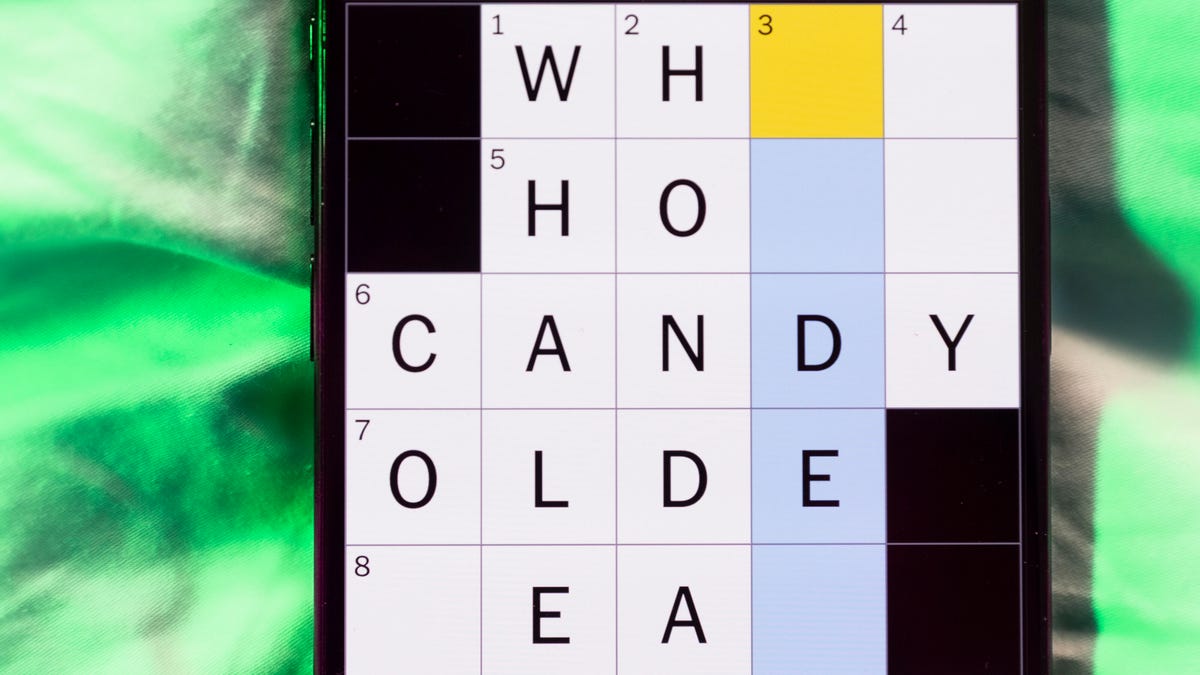
Looking for the most recent Mini Crossword answer? Click here for today’s Mini Crossword hints, as well as our daily answers and hints for The New York Times Wordle, Strands, Connections and Connections: Sports Edition puzzles.
Need some help with today’s Mini Crossword? I thought 8-Across was a bit of an odd one, since it was asking for a sound that has no universal spelling. If you need help, read on. And if you could use some hints and guidance for daily solving, check out our Mini Crossword tips.
If you’re looking for today’s Wordle, Connections, Connections: Sports Edition and Strands answers, you can visit CNET’s NYT puzzle hints page.
Read more: Tips and Tricks for Solving The New York Times Mini Crossword
Let’s get to those Mini Crossword clues and answers.
Mini across clues and answers
1A clue: «Soooo cute!» reactions
Answer: AWS
4A clue: ___ mode (battery-saving state)
Answer: SLEEP
6A clue: Afica’s largest capital city
Answer: CAIRO
7A clue: Bicker, bicker, bicker
Answer: ARGUE
8A clue: Close-mouthed sound of agreement
Answer: MMHMM
Mini down clues and answers
1D clue: Reason to suddenly bolt awake
Answer: ALARM
2D clue: Put on a scale
Answer: WEIGH
3D clue: kin-care product dispensed with a dropper
Answer: SERUM
4D clue: Total rip-off
Answer: SCAM
5D clue: «The Raven» or «The Road Not Taken»
Answer: POEM
Technologies
Today’s NYT Connections: Sports Edition Hints and Answers for Oct. 27, #399
Here are hints and the answers for the NYT Connections: Sports Edition puzzle for Oct. 27, No. 399.
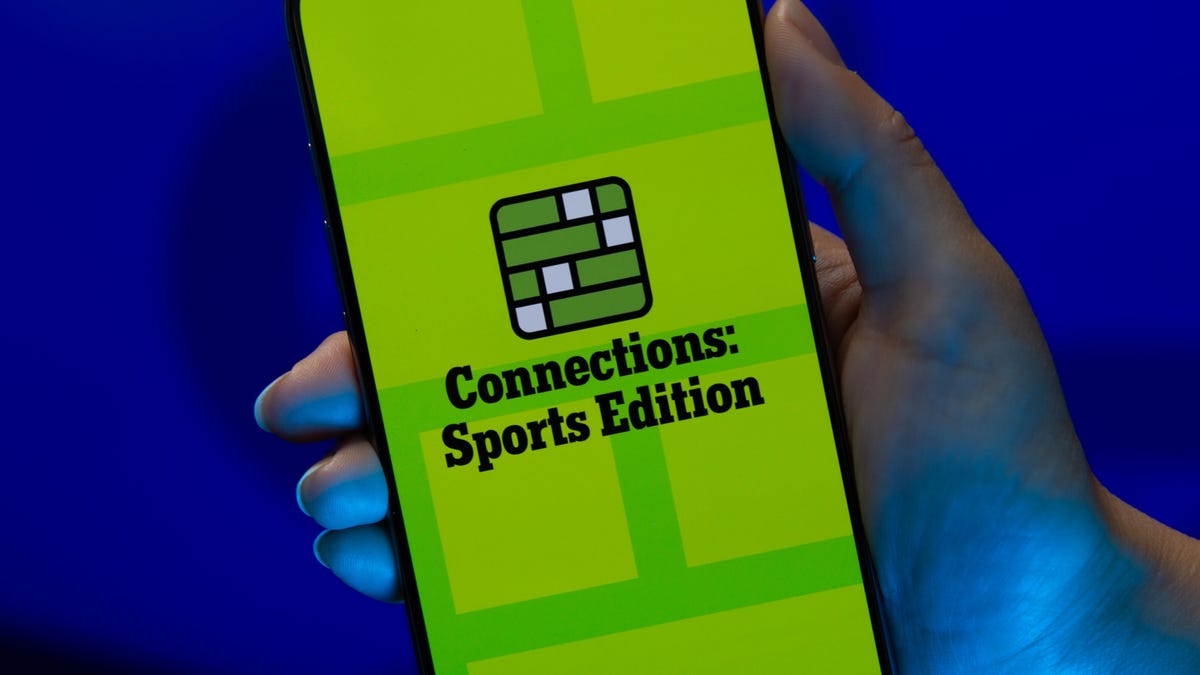
Looking for the most recent regular Connections answers? Click here for today’s Connections hints, as well as our daily answers and hints for The New York Times Mini Crossword, Wordle and Strands puzzles.
Today’s Connections: Sports Edition is a tricky one. Hope you know your NBA history! If you’re struggling but still want to solve it, read on for hints and the answers.
Connections: Sports Edition is published by The Athletic, the subscription-based sports journalism site owned by the Times. It doesn’t show up in the NYT Games app but appears in The Athletic’s own app. Or you can play it for free online.
Read more: NYT Connections: Sports Edition Puzzle Comes Out of Beta
Hints for today’s Connections: Sports Edition groups
Here are four hints for the groupings in today’s Connections: Sports Edition puzzle, ranked from the easiest yellow group to the tough (and sometimes bizarre) purple group.
Yellow group hint: Help athletes learn.
Green group hint: Statistics.
Blue group hint: From Sin City.
Purple group hint: Not Queens, but…
Answers for today’s Connections: Sports Edition groups
Yellow group: Coach.
Green group: Seen in a baseball scorebug.
Blue group: UNLV
Purple group: Home cities of the NBA’s Kings franchise, over time.
Read more: Wordle Cheat Sheet: Here Are the Most Popular Letters Used in English Words
What are today’s Connections: Sports Edition answers?
The yellow words in today’s Connections
The theme is coach. The four answers are drill, instruct, school and teach.
The green words in today’s Connections
The theme is seen in a baseball scorebug. The four answers are count, inning, outs and score.
The blue words in today’s Connections
The theme is UNLV. The four answers are Las, Nevada, University and Vegas.
The purple words in today’s Connections
The theme is home cities of the NBA’s Kings franchise, over time. The four answers are Cincinnati, Kansas City, Rochester and Sacramento.
Technologies
Today’s NYT Connections Hints, Answers and Help for Oct. 27, #869
Here are some hints and the answers for the NYT Connections puzzle for Oct. 27, No. 869.
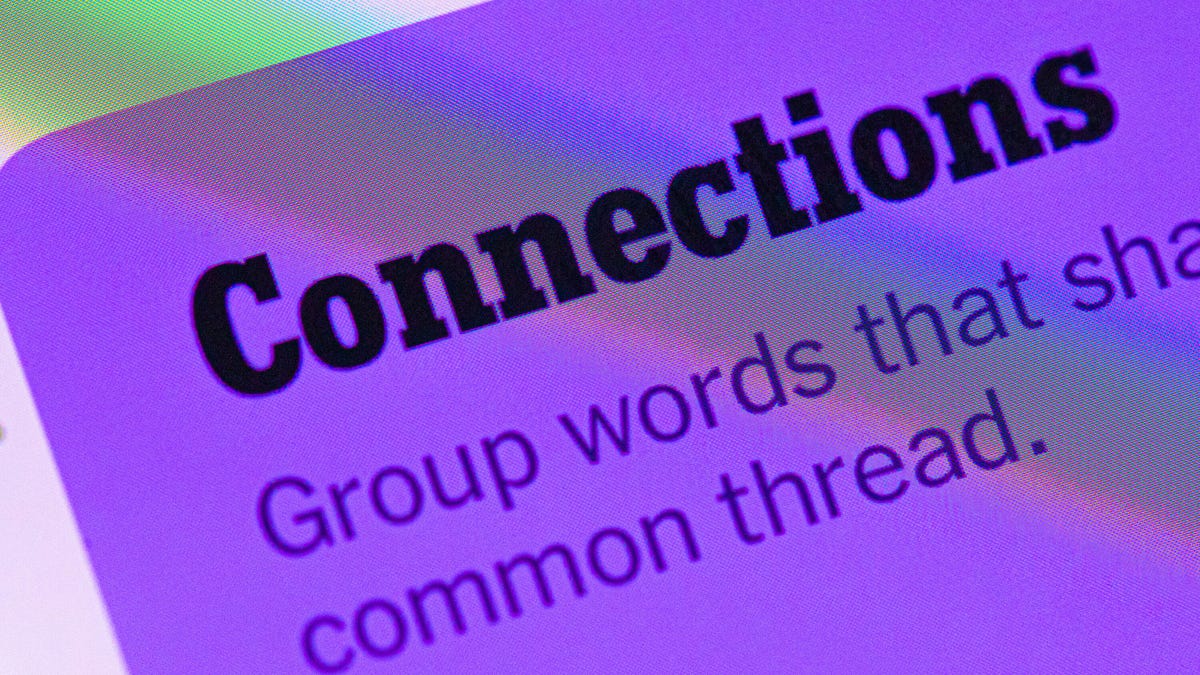
Looking for the most recent Connections answers? Click here for today’s Connections hints, as well as our daily answers and hints for The New York Times Mini Crossword, Wordle, Connections: Sports Edition and Strands puzzles.
Today’s NYT Connections puzzle has a fun mix of topics today. They’re not too tough but if you need help you’re in the right place. Read on for clues and today’s Connections answers.
The Times now has a Connections Bot, like the one for Wordle. Go there after you play to receive a numeric score and to have the program analyze your answers. Players who are registered with the Times Games section can now nerd out by following their progress, including the number of puzzles completed, win rate, number of times they nabbed a perfect score and their win streak.
Read more: Hints, Tips and Strategies to Help You Win at NYT Connections Every Time
Hints for today’s Connections groups
Here are four hints for the groupings in today’s Connections puzzle, ranked from the easiest yellow group to the tough (and sometimes bizarre) purple group.
Yellow group hint: Reach out from a center point.
Green group hint: Barely.
Blue group hint: Decorative eats in a drink.
Purple group hint: Not two or three, but …
Answers for today’s Connections groups
Yellow group: Emanate.
Green group: In the slightest.
Blue group: Cocktail garnishes.
Purple group: ____ four.
Read more: Wordle Cheat Sheet: Here Are the Most Popular Letters Used in English Words
What are today’s Connections answers?
The yellow words in today’s Connections
The theme is emanate. The four answers are branch, fan, radiate and spread.
The green words in today’s Connections
The theme is in the slightest. The four answers are just, merely, only and simply.
The blue words in today’s Connections
The theme is cocktail garnishes. The four answers are cherry, mint, olive and twist.
The purple words in today’s Connections
The theme is ____ four. The four answers are connect, fab, fantastic and petit.
-

 Technologies3 года ago
Technologies3 года agoTech Companies Need to Be Held Accountable for Security, Experts Say
-

 Technologies3 года ago
Technologies3 года agoBest Handheld Game Console in 2023
-

 Technologies3 года ago
Technologies3 года agoTighten Up Your VR Game With the Best Head Straps for Quest 2
-

 Technologies4 года ago
Technologies4 года agoVerum, Wickr and Threema: next generation secured messengers
-

 Technologies4 года ago
Technologies4 года agoBlack Friday 2021: The best deals on TVs, headphones, kitchenware, and more
-

 Technologies4 года ago
Technologies4 года agoGoogle to require vaccinations as Silicon Valley rethinks return-to-office policies
-

 Technologies4 года ago
Technologies4 года agoOlivia Harlan Dekker for Verum Messenger
-

 Technologies4 года ago
Technologies4 года agoiPhone 13 event: How to watch Apple’s big announcement tomorrow

